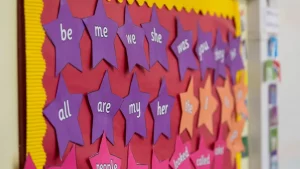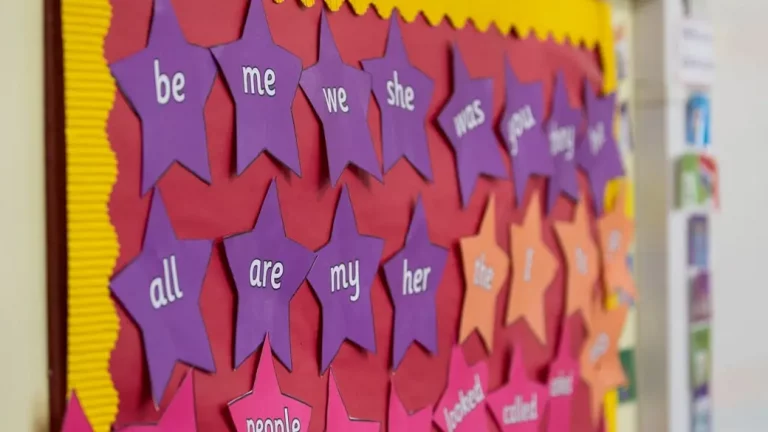5 most common Special Educational Needs (“SEN”) in schools
In this blog, Jonathan - a teacher who has taught special educational needs classes in schools and professionally tutored students with autism, dyslexia and attention deficit disorder - breaks down five of the most common special educational needs found in UK schools and provides some advice for teaching those who have SEN.
SEN in our schools
When I first became a teacher one of the aspects of school life that truly took me aback was the percentage of children in our classrooms who have special educational needs. In July 2019 the Department for Education released a report concluding that 14.9% of all pupils in the UK have SEN, with over 20% of those having an Education, Health and Care plan. With almost one in six students having SEN, identifying, understanding and responding to the most common SEN is a crucial part of any teacher’s role in 2021. With this in mind, I have detailed below the five most common special educational needs. I explain what they are, how they impact our young learners and how you can offer support as an educator or as a parent to help your students/children achieve their full potential at school. Naturally, it is important to remember that the special educational needs I discuss are extremely broad categories and that each student will respond uniquely to learning aids. Patience, reflection and a persistently positive attitude however are tools that, in my experience, never fail to support those with any special educational requirements.
Dyslexia
Number one in this list probably won’t be a surprise for many readers. An estimated 700 million people worldwide have dyslexia, and this prevalence has been reflected in my own experience as a teacher. Dyslexia presents problems predominantly with reading, writing and spelling, but it important for children with dyslexia to know that it is not a learning disability; that is, it doesn’t impact their intelligence. I have always made it a priority to firmly correct a dyslexic child when they infer they can’t do their work in class because “they’re too dumb”. In contrast, there are significant benefits to thinking differently to the majority; Richard Branson, Albert Einstein, John Lennon, Steven Spielberg and Pablo Picasso are/were all dyslexic!
The most common symptoms that impact a child’s experience in the classroom are: difficulty reading text, general disorganisation or forgetfulness and a poor standard of written work compared with oral ability. These are not exhaustive by any means, but they’re useful indicators to keep a lookout for as a teacher.
In terms of aids for dyslexic children, there are five main tools that I have used in the past to support my learners:
- Coloured rulers for reading
- Making sure there is always a dictionary on hand (bonus points if it’s light and pocket-sized!)
- Large-print reading materials
- Exercise books with coloured paper (experiment with various colours!)
- Reading materials in a sans-serif font (Ariel is always a place to start)
Autistic Spectrum Disorder
I once tutored a young man with autism. As we answered some science questions I asked: “What is this question really asking us?”. The young man replied, “Why don’t you just read it?”. When I look back on this I smile; it demonstrates two common symptoms of autism. Firstly, my student had failed to understand my meaning from my tone of voice, and secondly, he had replied in a way that some might consider rude. These are both very common when working with children who have autism. Throughout my time in schools, I have accumulated advice from those who work with autistic students the majority of the time. Here’s some of what I’ve picked up:
- Consistency is king. Changing a child’s schedule can have severely negative effects. Introduce routines that are adhered to all of the time, whether that be in the classroom or outside of it.
- Rewarding good behaviour. One of the things that I’ve personally found to help the most is letting a child know that they have done something well and that you are happy with them. Stickers can work miracles (I’ve also found this to be true with non-SEN children too!)
- Have a place for the student to ‘get away from it all’. At my first school, there was a wonderful room that autistic children could go to to calm down. It was a small, secure, calm place where nobody would disturb them. Again, I saw this tactic work miracles.
ADHD
In my experience, the main issue with Attention Deficit Hyperactivity Disorder is that the symptoms often present themselves as bad behaviour. Whilst all children need to understand what is acceptable and what isn’t, learning to stretch your patience as a teacher can work wonders for your professional relationship with a child. I know first hand that this is easier said than done – believe me. Here are some other useful tips I’ve picked up along the way:
- Make instructions incredibly clear. Repeat when you feel like there’s a chance a student still doesn’t know what your expectations are.
- Write down tasks on the board.
- Sit the student close to you so that conversations between you don’t have to be spoken loudly across a classroom.
- Let a student know immediately when a behaviour is not acceptable.
- Acknowledge that there will be days when, with the best will in the world, the student won’t get everything done that you wanted them to get done. Work with them so that “together we can help you do better next time”.
Anxiety
Exams. Revision for exams. Arguments with friends. Mum. Dad. Mum and Dad. English Homework. Maths homework. Science homework. Boys. Girls. Mean things sent on Snapchat. Changing bodies. New experiences. Things heard, said and done for the first time. It’s no wonder that the rates of anxiety in our young people have skyrocketed over the last decade. As teachers, it’s our role to let young people know that it’s all going to be OK, and spot the symptoms of anxiety in our students (sometimes even before they do). To that end, here are some of the most common symptoms of anxiety you might be able to spot in the classroom:
- Restlessness
- Excessive sweating
- Irritability
- Shortness of breath
- Crying with minimal provocation
And some things you can do to help:
- Mindfulness. I am not a mindfulness expert, but I have seen teachers trained in mindfulness help anxious children to an incredible degree. Students may be initially resistant, but if they can stick with it it can change their day to day experience at school.
- Allowing them to take a breath outside. I used to give a student of mine permission to take two-minute breaks, during which she used to stand outside the door (still in eyeshot) and breathe deeply.
- Talking about it. Letting kids know that anxiety is natural is an important step in helping them to accept their own anxiety.
Hearing Impairment
My first ever experience with an SEN child was a young man who was almost entirely deaf. As a nervous new teacher, I followed procedure and immediately ran to my mentor for help. She showed me some really useful tricks, which I’ll share below.
The thing that has come up time and time again regarding hearing loss in my experience as an educator is the sense of loneliness and exclusion that it can bring upon a young person. Inclusiveness is the key to helping a child with a hearing impairment enjoy your lessons, and as we all know, as enjoyment goes up so do results. Try thinking of ways to deliver your lessons more visually, rather than audibly, and the student will likely have a new favourite teacher!
Here are some of the other useful things I’ve used in the past:
- Radio aids. Wear a microphone so that the student has your voice channelled directly into their ear. If other students ask about the microphone be honest with them.
- Never give instructions or information whilst facing the board. Face the student directly and speak clearly.
- Print out information on a sheet as a backup for the child. Put instructions, objectives and information on the sheet so that they can refer to it without feeling like they have to ‘bother’ you.
- Pair them with a friendly student who won’t mind helping them when they miss something. In my experience, other students love being a ‘hearing partner’ – it gives them a sense of responsibility.
Closing thoughts:
One thing that many teachers forget to do when thinking of ways to help a child is to talk to the child. They understand their requirements and emotions better than you ever will, and are the resident experts in how to help them (on that note, their parents might also have some useful insights too!). Recognise and acknowledge that you won’t get everything right the first time, and that nobody expects you to either. The most important thing is to learn what does work from what doesn’t work. Be open to new ideas, and don’t be afraid to get advice. Good teachers borrow ideas from other teachers. Great ones steal from them outright.



Start the discussion!